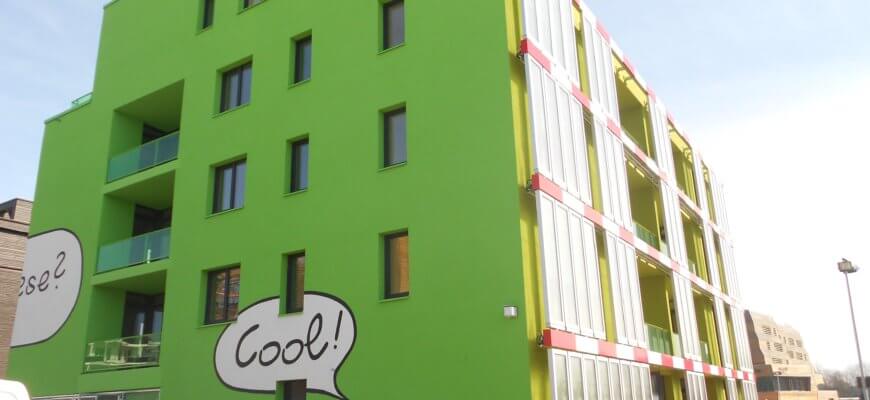The topic of energy storage is more up-to-date than ever. Electric mobility solutions are in need of high-capacity batteries to operate over large distances. The demand for renewable energy sources like wind or solar energy is growing – but those resources are not continuously available. Practical solutions to store energy, available during storms or sunshine and use on the next windless day or the night, are not available. Tackling this issue in a ‘biomimetic way’, one could look into nature and try to find natural solutions for energy storage. But at this point I would like to refer to Jan’s article from last week. The production and distribution of energy is nature is fundamentally different from human technology! Energy storage solutions in nature are a potato full of carbohydrates. Or a bear getting fat and prepared for hibernation – but not a battery which operates your dishwasher!
So, what can we do?
In 2013, I visited the IBA (the international building exhibition) in Hamburg. Actually, for one main reason: to see the algae house by BIQ. This building is a pioneer housing project in Hamburg-Wilhelmsburg, where engineers and architects (and I am sure some biologist were also involved) designed a house which is completely energy self-sufficient and gets its energy mainly from a façade out of bioreactors with algae. Of course, this is not a battery per se. But it illustrates perfectly, what a modern renewable energy concept can look like, how natural energy cycles work and how they might serve as energy storage solutions via time-delayed effects.

The algae house under construction at the IBA Hamburg 2013 – the bioreactors are already set up
How does the algae house work?
Even though the prominent algae façade is the most obvious feature of the algae house, it is a holistic renewable energy concept which makes it so special. The algae in the bio reactors at the house façade are growing and multiplying and thereby producing biomass. This biomass is transformed into methane (=biogas) in an internal biogas plant ( 70-80% efficiency). This biogas is operating an efficient fuel cell and here it is! The electricity we need for lights, dishwasher and all the other electrical devices we want to use in our algae house. As a by-product, we gain heat (for hot water or heating in the house) and CO2. This we give back to the algae, because they need it for photosynthesis. Excessive heat which is not needed for internal heating or hot water is going into the local grid for the neighbourhood or stored in a geothermal energy system underneath the algae house. If you want to see this energy cycle in a nice animation – please click here to get more information about the BIQ algae house first hand.
How is the algae house a ‘better battery’?
Now coming back to the topic of energy storage and the question, if the algae house really is a better battery! By definition: a battery is an electrochemical energy storage solution with an interconnection of multiple galvanic cells. Find more info about galvanic cells here. Or a short explanation: a device which is converting chemical into electrical energy via coupling two chemical reactions (oxidation and reduction) with an ionic bridge and using the resulting flow of electrodes to generate a current. The basic principle of a battery can be found in the algae house (for example in the operating fuel cell) but I think it is more the overall concept, which resembles a sophisticated – biological – energy storage solution. Even though our algae rely on sunshine to photosynthesize and grow – energy from their biomass can be generated also in the night! The algae are fixating CO2 which is available later. So, on a sunny and warm day we might have some loss of solar energy because we cannot store more hot water than our tanks can take. But: under optimal conditions, the algae are growing very fast and their increasing biomass is a storage of energy in itself.

What is a battery? And are there alternatives in terms of energy storage concepts?
Is this Biomimetics?
Without wanting to bore you with definition, I find the question if such a concept is considered ‘biomimetic’ quite interesting. As described above, we are for sure using a biological functional principle to improve a technological application. So: this is Biomimetics. Because we are USING biological material though (the algae) – this is actually belonging into the field of Biotechnology. SO: I would conclude that on a material basis, we are dealing with Biotechnology. But on a conceptual basis, this is definitely a bio-inspired – or even biomimetic – energy system. If you want some further clarification of these terms: find more info in this publication.
Would you like to live among algae to support the concept of an energy self-sufficient house? Please feel free to post your thoughts and comments about the algae house!
Reference & further information: BIQ – Das Algenhaus



